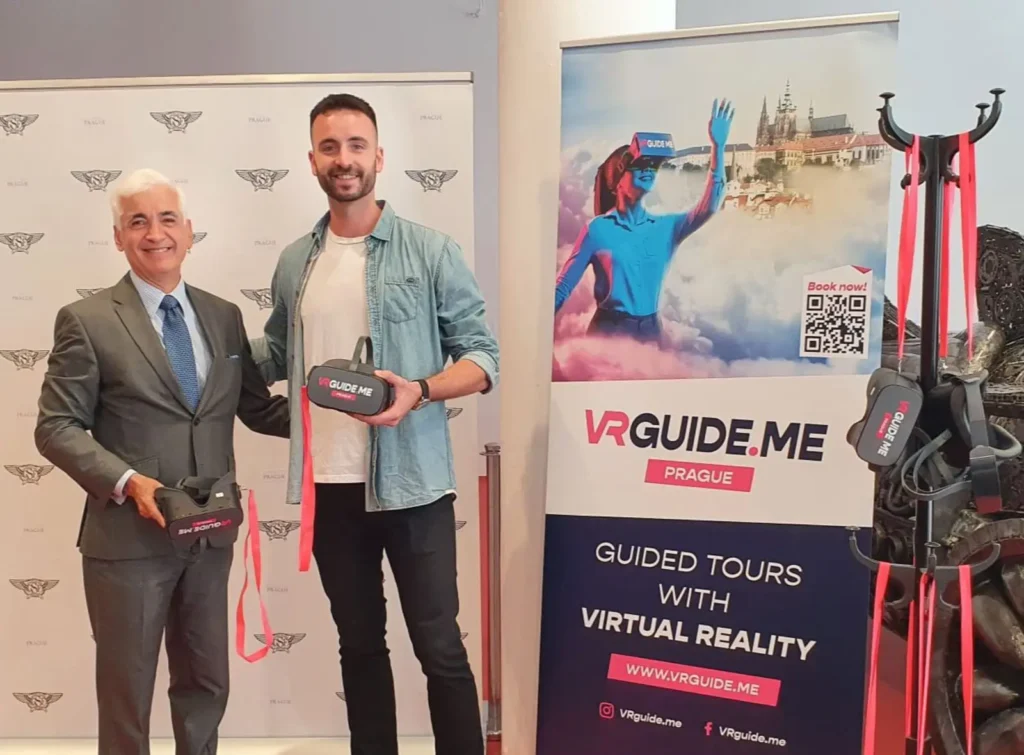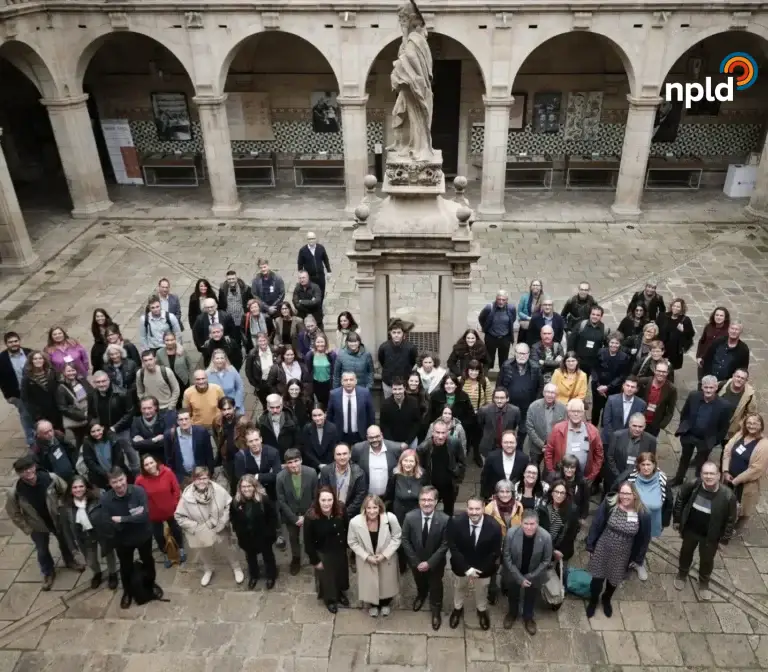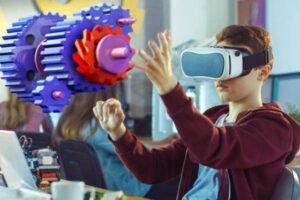Inicio » Augmented Reality » Augmented Reality Applications: Innovative Uses in Modern Industry
Augmented Reality Applications: Innovative Uses in Modern Industry

Augmented reality is a technology that allows us to superimpose virtual elements on our real environment, creating a unique and interactive experience. This merging of worlds has led to the development of a wide range of augmented reality applications that transform everyday activities into richer, more immersive experiences. This merging of worlds has led to the development of a wide range of augmented reality applications that transform everyday activities into richer, more immersive experiences.
As we move forward in their integration, we discover that augmented reality applications offer us revolutionary tools for various industries and fields of study. For example, in the educational field, they allow us to visualize complex concepts in 3D, improving learning and knowledge retention. In the professional world, these applications offer unprecedented potential for data visualization, design and prototyping in sectors such as architecture and engineering.
Our exploration of augmented reality applications also takes us into the realm of entertainment, where games and entertainment experiences exploit the immersive potential of this technology. Moreover, in everyday life, augmented reality tools for smartphones allow us, for example, to visualize how furniture would look in our home before making a purchase, or even help us translate signals in real time while traveling. The reach of augmented reality continues to expand, and we continue to embrace these tools to improve the way we live and work.
Would you like to apply virtual or augmented reality? At Virtual Arena we are specialists in consulting and development of immersive projects for companies and institutions.

Augmented Reality Basics
Augmented Reality (AR) is a new technology innovative that enriches our world with digital information. In essence, it allows us to display three-dimensional virtual objects in real time and in our physical environment. For a better understanding, we break down the fundamental pillars of AR:
- AR software: It is the heart that manages how the 3D objects and other digital information are superimposed on the real world. This software interprets our interaction and adjusts the visual experience accordingly.
- Devices with Cameras: Devices such as smartphones and tablets use their cameras to capture the environment and allow the AR software to position virtual objects in a coherent manner.
- Visualization: AR devices use screens, glasses or projectors to allow us to see objects added to the natural environment. The quality and display format depend on the device and its hardware.
Here are some key points about this technology:
- Real-time interactivity: Users can manipulate virtual elements as if they were real.
- Contextual accuracy: Virtual objects are positioned and behave according to the physical environment.
- Intuitive navigation: AR systems help us navigate and better understand our environment by providing relevant contextual information.
We understand AR as a window to a world that combines the tangible with the digital, offering enriched experiences that transform the way we interact with our environment.

Platforms and Key Technologies
In the development of augmented reality applications, we focus on a variety of platforms and essential technologies. These allow us to create immersive and functional experiences for different operating systems such as iOS from Apple and Android from Google.
For iOS, we use ARKit, a powerful framework that facilitates the integration of augmented reality into applications. It allows us to detect surfaces, estimate ambient lighting, and position virtual objects in the real world in a convincing manner.
On the other hand, in Android, we rely on ARCore, Google’s SDK. which provides similar functions to ARKit. ARCore optimizes augmented reality for a wide range of devices available on Google Play, allowing us to reach a broad audience.
|
Platform |
Technology |
Purpose |
|
iOS |
ARKit |
Creating and deploying AR applications with plane detection, motion tracking, and ambient estimation. |
|
Android |
ARCore |
Providing AR experiences on multiple devices, focusing on environmental and user tracking. |
We use these platforms and technologies as fundamental pillars to ensure that our augmented reality applications are accessible, realistic, and captivating. We stay up-to-date with the latest updates to ensure that our applications make the most of the capabilities of both operating systems. With these tools, we strive to exceed expectations and deliver experiences that were previously unimaginable.

Applications in Education and Science
Augmented reality applications have the potential to transform education and science, offering innovative methods for interactive learning and scientific visualization. We focus on how these tools enrich the educational experience for children and adults through practical examples and concrete applications.
Interactive Learning
Tools like Quiver have revolutionized the way children interact with educational material. By coloring drawings that come to life on the screen, students can learn about geometry by observing how they squares and other shapes transform into three dimensions. On the other hand, applications like JigSpace allows us to explore interactively various objects and mechanisms, from Earth’s layers to complex machinery.
- Exploration of the Human Body:
- AR Anatomy 4D+ enables students to visualize in detail and in real-time the different layers and organs of the human body, enhancing their understanding of anatomy.
Scientific Visualization
Augmented reality opens a visual window to parts of science that we could previously only imagine. Applications like Star Chart makes learning about constellations and planets a literal celestial experience, placing an interactive universe before our eyes.
- Learning Languages with Context:
- With Mondly, language education takes an additional dimension; AR allows visualizing conversations and objects, making a significant difference in the retention of new vocabulary and grammar.
Each mentioned application serves as a bridge between abstract knowledge and tangible experience, helping both educators and students to fully immerse themselves in the process of learning and discovery.
Entertainment and Games
Augmented Reality (AR) has revolutionized the way we interact with the world of entertainment and games, offering experiences that transcend the limits of the screen and integrate into our environment.
Augmented Reality (AR) Video Games
In the field of Augmented Reality (AR) video games, Pokémon GO is a pioneer that brought these experiences to the streets, allowing us to capture Pokémon in real-world environments. It is developed by Niantic, a company that has adeptly leveraged AR to create interactive worlds where players can explore and socialize. Another prominent title is Ingress, also by Niantic, which blends elements of science fiction with physical space, inviting users to become part of a global community.
- Highlighted Games:
- Pokémon GO: Combines AR with GPS to find and capture pokémon in real locations.
- Ingress: Encourages exploration and collaboration in real location-based missions.
Immersive Experiences
When we talk about immersive experiences in AR, we refer to applications like Star Walk 2., which transforms our night sky into an interactive star map. It’s much more than a game; it’s an educational tool that allows users, both amateurs and expert astronomers, to discover constellations, planets, and other celestial bodies. This experience is enriched with detailed data and impressive graphics that enhance our knowledge about the universe around us.
- AR Applications for Astronomical Exploration:
- Star Walk 2: Use AR to identify stars and constellations by overlaying information on the real sky.
Augmented Reality (AR) doesn’t confine itself to virtual reality but complements our view of the environment with layers of information and digital entertainment. In our progress with these technologies, we continue to discover new ways to interact with the world through our devices, and in the process, we find that AR has the power to strengthen bonds with friends, entertain us, and educate us. AR applications already span a variety of sectors, but in entertainment and gaming, they offer us a window into nearly limitless possibilities.

Augmented Reality Applications at Home
Augmented reality has revolutionized the way we interact with space in our homes, allowing us to visualize changes without moving a single piece of furniture. Now we can plan and design with precision and confidence.
Decoration and Furniture
With applications like IKEA Place, we have the ability to virtually try out furniture and decorations in our home before making a purchase. We just need our camera, and we can see how that new sofa would look in our living room or how a shelf fits perfectly in that empty corner. This technology helps to avoid common mistakes and ensures that the size, style, and color fit our needs.
- Visualization: Seeing how furniture looks in our home.
- Customization: Virtually changing colors and designs for better decision-making.
Space Organization
Planning the layout of our house has never been easier thanks to applications like Magicplan y AR Plan 3D.. With them, we can measure our space and create detailed floor plans. These tools are essential for those looking to maximize the use of every corner of their home, allowing for smart and efficient organization of spaces.
- Measurement and Planning: Create plans with exact measurements of the rooms.
- Space Optimization: Evaluate different furniture configurations and home elements.

Utilities and Practical Tools
In our exploration of augmented reality applications, we discover tools that transform efficiency in everyday tasks. With a mobile phone, we can measure, design spaces, learn languages, and translate texts in real-time.
Measurement and Design
Augmented reality allows us to use our phone as if it were a tape measure. Applications such as Google Lens transforms the mobile phone’s camera into a measurement tool capable of estimating measurements and heights with the help of a built-in digital compass. These applications are useful for designing spaces as they allow us to visualize how furniture and other objects would fit in an environment before making any physical changes.
- Examples of use:
- Measuring furniture to verify that they fit in a space.
- Estimating the height of objects when we don’t have a traditional tape measure.
Translation and Language Learning
Our experience is enriched by using augmented reality to overcome language barriers. Google Translate Google Translate is an example of how our mobile phone camera assists us in live translations. We point the camera at texts in other languages, and the application overlays the translation in our language. This is especially valuable for learning new languages and understanding signs or menus abroad.
- Examples of use:
- Reading signs and menus in foreign languages.
- Support in learning vocabulary and common phrases in a new language.

Social Media and Communication
Incorporating Augmented Reality (AR) into social media is revolutionizing the way we communicate and interact in the digital realm.
Augmented Reality in Social Media
Augmented Reality has transformed social media into more interactive platforms. It allows us to create and share experiences that go beyond static content. Like Augmented Reality in social networks such as Facebook not only improves content sharing but also opens up new possibilities for marketing and advertising. Tools such as Sketcharpermit users to create their own AR artwork and share it through their networks, fostering a vibrant and dynamic community of users who contribute their own creations.
- Advantages:
- Improves the interactivity of publications.
- Facilitates innovative forms of expression.
- Boost digital marketing.
Contact our Virtual Arena team and learn how to apply this technology for your company’s marketing.
Shared Experiences
Our online interactions have become more immersive thanks to Augmented Reality. Applications such as Wallpapers allow you to leave hidden messages in the real world that can only be revealed through an AR layer, fostering a unique form of communication.. As AR technology advances, the experiences we share on social networks become richer and more personal, transforming our messages from simple texts to shared experiences. The Email also benefits from AR, as interactive elements can be incorporated into email marketing campaigns to improve engagement rates.
- Impacts on communication:
- Creates additional layers of interaction.
- Enriches the visual content.
- Generates opportunities for product placement.
These AR applications not only enrich the way we connect and communicate, but also shape a new landscape for creativity and social interaction.
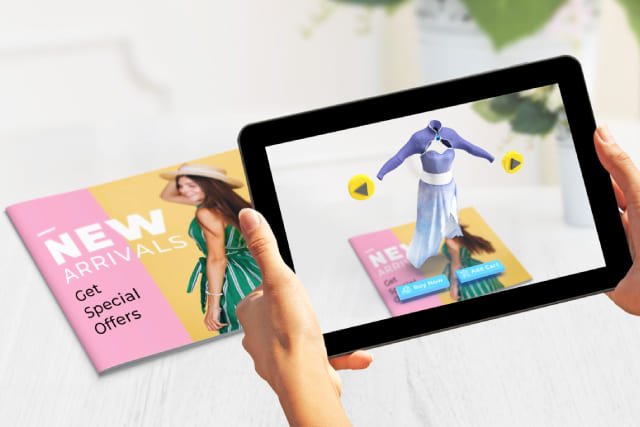
Fashion and Trade
Augmented reality (AR) is revolutionizing the way we interact with fashion products, allowing us to explore and try on clothing and accessories in a whole new way. In this digital environment, brands such as Nike y Puma are at the forefront, incorporating these technologies to enhance the shopping experience for their consumers.
Virtual Product Testing
Virtual product testing is a significant breakthrough in the fashion industry. This technology allows buyers to try on clothing and slippers without the need to be physically in the store. For example, Wanna Kicks is an application that offers its users the ability to try on sneakers virtually, combining 3D models with the phone’s camera for a realistic view of the product on their own feet.
- Apparel: Fashion companies use AR to create virtual fitting rooms where customers can see how a garment looks on them in various colors and designs, without having to physically change it.
- Sneakers: Brands such as Nike feature apps that allow customers to see how different models of sneakers look on their feet using their device’s camera.
- Accessories: AR has also been instrumental in the sale of accessories, providing a preview of how items such as eyewear, watches or jewelry look on the buyer.
The integration of augmented reality in fashion retail not only provides an exceptional user experience, but also helps brands reduce the number of product returns, as shoppers have a better perception of what they are buying.
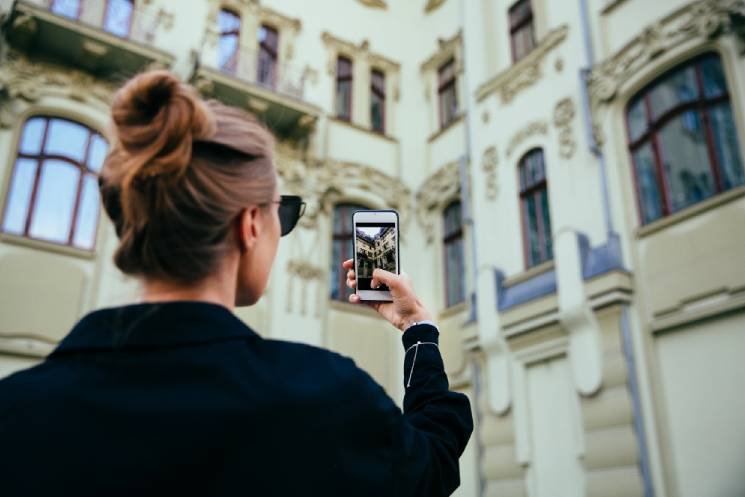
Digital Art and Creativity
We explore the infinite possibilities that augmented reality opens up for digital art. We focus on how this technology enables the creation of new content and visual experimentation that transforms our perception of art.
Creation of Artistic Content
Augmented reality provides us with tools for drawing and interaction. with our doodles in a three-dimensional space. With applications such as Just a Line, we can create lines and shapes that float in the air, giving them life beyond the paper. This opens up a new canvas for artists and creates opportunities for anyone to explore their creativity. For example, Quiver allows us to color drawings that, when viewed through an application, become 3D animations.
Visual Experimentation
In our visual experimentation, we use augmented reality to retouch spaces with virtual graffiti. without altering the physical environment. This form of artistic expression allows us to superimpose images and animations on existing structures, transforming the way we interact with and appreciate public space and works of art. It is a fusion of reality and virtuality that expands the artist’s palette and envelops the viewer in a unique experience.
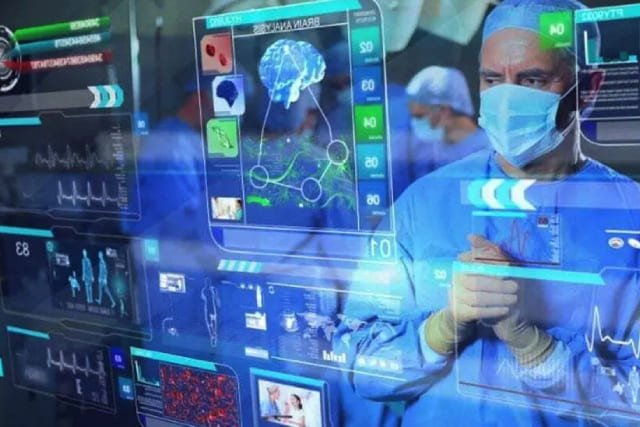
Health and Medical Applications
Augmented reality applications in the healthcare field are a technological breakthrough that transforms the way we learn and practice medicine. They enable us to interact with three-dimensional models of the human body and to better understand its functions and structures.
Medical Visualization
Medical visualization is one of the most impressive areas where augmented reality has had a significant impact. Using this technology, we, the healthcare professionals, can superimpose digital images on the real human body. This facilitates a deeper understanding of the anatomy and promotes a medical education more interactive. Specific applications include the accurate representation of organs for planning surgery or teaching complex procedures to medical students.
An outstanding example is the use of desimulators. that allow real-time visualization of internal body structures during an ultrasound scan, thus improving diagnostic and therapeutic accuracy. These types of applications support the acquisition and consolidation of knowledge, which present a more dynamic and detailed way of studying the systems that make up the human body, have been designed to provide a more dynamic and detailed study of the systems that make up the human body. Moreover, such tools are not limited only to physicians and students; they are also valuable in sensitizing patients to their conditions and the procedures they are about to face.

Tourism and Urban Exploration
Augmented reality applications are revolutionizing the way we experience tourism and urban exploration. They offer us an enriched and detailed view of the cities we visit, transforming simple walks into informative and memorable adventures.
Tourist Guides and Augmented Reality
Guideo is an outstanding example of how augmented reality allows us to interpret tourist attractions. in a completely new way. When using our tablets or smartphones, we can access virtual guided tours that superimpose images and historical narratives over the real view, bringing the stories of the past to life before our eyes.
- Advantages:
- Interactivity: Engage travelers with tours that respond to their location and preferences.
- Personalization: It offers customized routes according to the interests of the visitor.
These enriched tourist guides, such as those provided by Guideo, enhance the value of each monument, contextualizing it in its history and culture.
Discovery of Monuments and Sites
With augmented reality, discovering monuments and sites The outstanding experiences become a unique experience. Applications such as Star Walk 2 uses your device’s camera to reveal details about the stars and constellations visible from your location.
- Key functions:
- Stellar exploration: Identifies celestial bodies and provides real-time information.
- Location of monuments: Integrates databases such as those of Google Maps to show nearby points of interest by simply pointing our device at them.
With these tools, we transform our urban exploration into a journey of discovery, where every corner and every star has a story to tell.
You can also read our article where we talk about the application of augmented reality in museums.
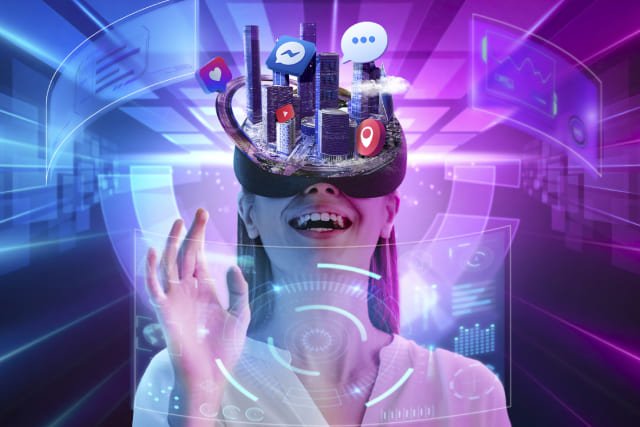
Modes and Visual Effects
In our exploration of augmented reality, it is essential to understand how visual modes and effects are applied to enrich the user experience. These elements not only enhance interaction but also expand the creative and functional possibilities of the mobile camera.
Filters and Cameras with AR Effects
Mobile device cameras have evolved to integrate augmented reality (AR) effects that offer a remarkable level of immersion and personalization. One of the most popular uses of AR in mobile cameras is through filters that transform the image in real time.
For example, applications such as YouCam Makeup allow users to experiment with different make-up styles. virtual. With a simple tap, we can apply and adjust a variety of makeup effects ranging from lipsticks to eyeshadows, instantly showing us the result through the cell phone screen.
- Description of Effects:
- Realistic: They accurately mimic real makeup, matching facial features.
- Fantasy: They create looks that would be impossible in real life, such as glitter effects or complete face transformations.
These filters have become valuable tools for both everyday users looking for entertainment and beauty professionals who want to visualize and create new makeup looks without applying physical products. The combination of visual effects and the ease of use of the mobile camera opens up a range of possibilities in terms of creativity and experimentation.
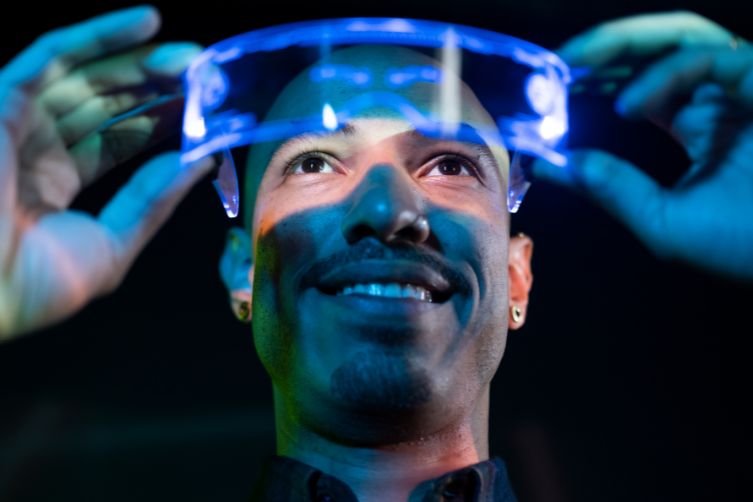
Augmented Reality in Sports
Augmented reality (AR) has revolutionized the way we experience and interact with the world of sport, providing advanced tools for training and performance evaluation that transform both the preparation and perception of athletes and coaches.
Training and Performance Evaluation
The integration of augmented reality into sports training has enabled coaches and athletes to carry out accurate measurement of various performance parameters. Using AR software and devices, we can overlay real-time statistics and performance data on top of the athlete’s or coach’s vision. This not only improves the understanding of tactics and techniques but also helps to adjust training strategies according to the athlete’s current level.
In terms of performance evaluation, AR empowers coaches to perform detailed tracking and obtain measurements quantifiable data on athletes’ progress and skills. For example, in sports such as swimming or track and field, AR technologies can accurately calculate the speed, form, and efficiency of an athlete’s movements, allowing them to view their performance against the optimal levels.
These advanced technologies provide immediate feedback that is vital for constant improvement, and in turn, foster a more interactive and enriching experience. With augmented reality, our ability to hone our skills in the world of sports has reached dimensions that were previously unimaginable.
AR Development Platforms
In the field of augmented reality (AR), we, as developers, have robust tools that facilitate the creation of immersive applications. Two technological giants, Apple and Google, offer their own solutions: ARKit and ARCore, respectively.
ARKit is a set of tools provided by Apple that leverages the sensors and hardware capabilities of iOS devices to create AR experiences. With ARKit, we can create apps that understand the environment, accurately positioning and maintaining virtual objects in space. It is constantly being updated, adding new features that expand the creative possibilities.
On the other hand, ARCore is Google’s wearable platform designed to run on a wide variety of Android devices. ARCore makes AR accessible across different smartphones by providing capabilities such as motion tracking, environmental understanding and light estimation.
Both solutions enable the following key functionality:
- Motion tracking: For applications to detect the relative position of the phone as it moves.
- Environmental understanding: To detect the location and size of all horizontal, vertical and angular surfaces.
- Light estimation: For virtual objects to perform shading and lighting consistent with the environment.
A quick comparison of the two platforms is shown below:
|
Features |
ARKit |
ARCore |
|
Devices |
iOS |
Android |
|
Light estimation |
Yes |
Yes |
|
Spatial understanding |
Yes |
Yes |
In addition to these two options, there are other frameworks and software development kits (SDKs) that extend AR development capabilities. Microsoft has also entered this space with tools such as the Microsoft Mixed Reality Toolkit, allowing us to develop beyond mobile devices.
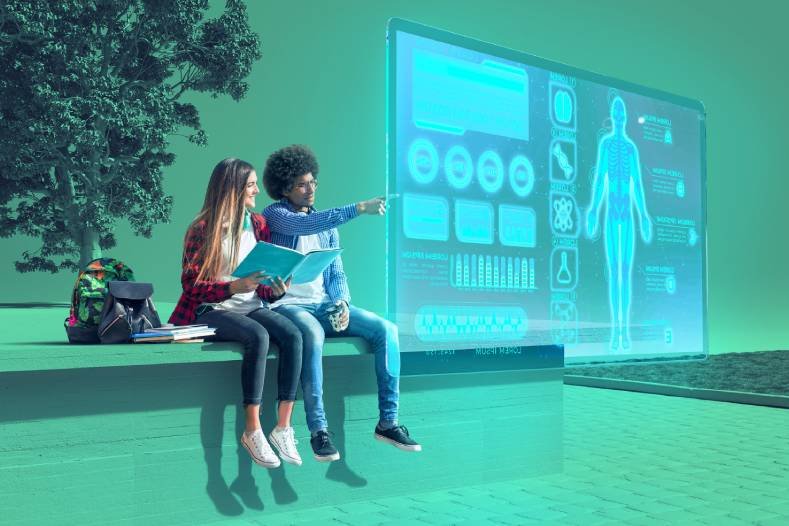
Future of Augmented Reality
In the next few years, we anticipate that trends will continue to in augmented reality (AR) will focus on deeper integration into our day-to-day lives. Currently, we are seeing an increase in gadgets that incorporate AR, such as smart glasses and specialized mobile devices.
Our daily lives will be dramatically transformed by applications that offer real-time assistance, enhanced navigation and immersive entertainment experiences. The education, healthcare and e-commerce sectors will be particularly revolutionized by these innovations.
|
Sector |
AR Innovation |
|
Education |
Immersive learning and hands-on training |
|
Health |
Assistance for surgeries and diagnostics |
|
Trade |
Virtual product testing and shopping experiences |
The innovations in hardware and software will drive these transformations. For example, continued improvement in object tracking accuracy and spatial recognition will enable AR to become even more integrated and less distinguishable from our natural perception of the world.
We hope that, in the future In the near future, AR will be as ubiquitous as smartphones are now. Our environments will be perceived as digitally enriched, opening up a wide range of possibilities. Improved efficiency, personalized entertainment and social interactions through AR will become an integral part of our lives.
We believe that the future of augmented reality applications presents us with an exciting horizon of possibilities and challenges. We are on the threshold of significant changes that will redefine the interaction between the physical and digital worlds.
Some questions about augmented reality applications
In this section we address some of the most frequently asked questions about augmented reality and its practical application in different fields.
What free tools are available for creating augmented reality applications?
There are several free tools that facilitate the creation of augmented reality applications, such as Google’s ARCore and Apple’s ARKit, which provide robust frameworks for developers.
What are the five most popular augmented reality applications today?
Popular apps include Pokémon GO, Snapchat with its AR filters, Google Lens, IKEA Place and JigSpace, which allows you to explore various objects and processes in 3D.
What free augmented reality educational apps are available for teachers and students?
For the education sector, apps such as Chromeville Science and AR Anatomy 4D+ are excellent free resources that allow students and teachers to interact with AR-enriched educational content.
Could you list ten examples of the use of augmented reality in different sectors?
Augmented reality is used in sectors such as marketing, for example, to test products virtually; in education, facilitating interactive learning; in healthcare, with applications for surgical simulation; in tourism, offering virtual tours; in retail, through virtual fitting rooms; in video games, with immersive experiences; in industrial maintenance, providing interactive manuals; in architecture and design, visualizing projects in 3D; in navigation and maps, improving spatial orientation; and in art and exhibitions, creating interactive gallery experiences.
How can I create my own augmented reality application for mobile devices?
To create your own augmented reality application, it is necessary to familiarize yourself with specialized platforms such as Unity or Unreal Engine, which integrate AR support and offer resources and tutorials. Courses such as Coursera can be a good starting point.
How can QR codes be integrated with augmented reality to enhance interactivity?
QR codes can be used as augmented reality markers to launch animations, videos and other interactive content when scanned with a mobile device camera, expanding the possibilities for user interaction.
Share note:
Recent articles
Contact with experts
Looking to create a project with immersive technologies?
At Virtual Arena we are professionals in creating digital experiences.
Do you have a project in mind?
Related articles

